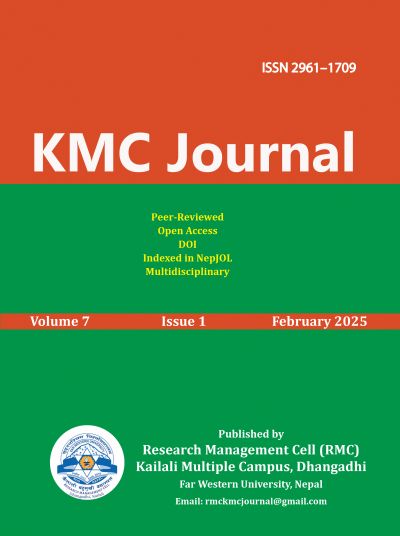Teaching Multiplication Using Vedic Mathematics Approach
DOI:
https://doi.org/10.3126/kmcj.v7i1.75119Keywords:
Vedic mathematics, student engagement, action cycle, sutras and sub-sutras, mathematical anxietyAbstract
The Vedas are the most ancient knowledge reservoir of Hindu philosophy. Bharati Krishna Tirtha Ji developed Vedic mathematics after eight years of intensive study of the Vedas. He extracted mathematical concepts from the Vedas and developed Vedic mathematics, which consists of sixteen sutras and thirteen sub-sutras. Vedic mathematics is an innovative approach with applications in a wide range of fields such as science, engineering and so on. Though Vedic mathematics has much usefulness in mathematics, the present teaching-learning practices of mathematics are not valuing its importance. The purpose of this research was to investigate the utility of Vedic mathematics techniques in the mathematics classroom. Action research was carried out in one of the government schools in the Kanchanpur District to conduct this study. This study focused on teaching multiplication to fourth-grade children by utilizing the Nikhilam and Ekadhikena Purvena sutras. It was found that incorporating the Vedic approach improved pupils’ mathematical performance, enabling them to solve problems faster. The implementation of Vedic techniques empowered and motivated students towards learning mathematics. In addition to that, Vedic mathematics’ simple and straightforward approaches helped students in solving problems quickly. This study concluded that pedagogical strategies of Vedic mathematics can be a useful and beneficial strategy for teaching mathematics at the school level.
Downloads
Downloads
Published
How to Cite
Issue
Section
License

This work is licensed under a Creative Commons Attribution-NonCommercial 4.0 International License.
This license allows reusers to distribute, remix, adapt, and build upon the material in any medium or format for noncommercial purposes only, and only so long as attribution is given to the creator.




